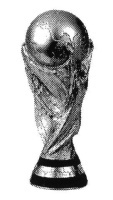This explanation is for those who are not yet experienced with trademarks, and describes the major points in a way that is easy to understand. The following information is about trademarks in Japan.
Further information can be found at the Japanese Patent Office Homepage.
Questions about technical terms
- What is a “trademark”?
- What is a “trademark right”?
- What is a “registered trademark”?
- What is “trademark registration”?
- What are “designated goods” and “designated services”?
- What is “classification”?
- What is a “Notice of Reasons for Rejection”?
- What is a “Written Opinion”?
- What is an “Amendment”?
- What is a “Decision of Registration”?
- What is a “Decision of Rejection”?
- What is a “renewal”?
- What is “similarity”?
Questions about filing an application
- What should I do to obtain a “trademark right”?
- Where can I file a “trademark registration application”?
- When do I file a “trademark registration application”?
- How long does it take from filing a “trademark registration application” to being granted a “trademark registration”?
- What is “accelerated examination”?
Questions about trademark rights
- Is a “trademark registration” valid in other countries?
- Can a “trademark right” be assigned (bought and sold)?
- Can a “trademark right” be used to form a trademark licensing contract?
Other questions
Questions about technical terms
- What is a “trademark”?
-
A trademark is a mark used for one’s own goods or services. A trademark can be “characters,” “images,” “symbols,” or the like. Trademarks can be two-dimensional images, or three-dimensional objects.
(Examples of Trademarks)
Character Trademarks



Two-dimensional image trademark

Three-dimensional object


- What is a “trademark right”?
-
A “trademark right” is a right that grants sole ownership of a registered trademark. Therefore, it is possible to stop others from using your trademark.
A trademark right is valid for 10 years from when the trademark is registered, but can be kept valid almost indefinitely if necessary by repeatedly obtaining “renewals.”
A “trademark right” is a right that includes a combination of both the actual “trademark” and the “goods or services (designated goods or designated services) using the trademark.”
- What is a “registered trademark”?
- A “registered trademark” is a trademark that has been registered in the Trademark Registry of the Japanese Patent Office, and is a trademark for which a “trademark right” is recognized.
- What is a “trademark registration”?
-
A “trademark registration” refers to a filed trademark application passing an examination by an Examiner of the Japanese Patent Office and being registered in the Trademark Registry.
A “trademark right” can be obtained by registering a trademark.
- What are “designated goods” and “designated services”?
- In a trademark registration application, it is necessary to designate the “trademark” and the “goods and services” that will use this trademark. The goods and services designated here become the “designated goods” and “designated services.”
- What is “classification”?
-
“Classification” is used to categorize goods and services according to prescribed standards, and there are 45 different classifications.
An application with a larger number of classifications results in higher payments to the Japanese Patent Office during the application and registration stages.
It is necessary to state the “classifications” along with the “designated goods and designated services” in the trademark application documents.
- What is a “Notice of Reasons for Rejection”?
-
A “Notice of Reasons for Rejection” is a notification sent from the Japanese Patent Office when an Examiner has determined that a trademark application must be rejected, meaning that the trademark cannot be registered in its current state.
If a “Notice of Reasons for Rejection” is not countered by a “Written Opinion” or an “Amendment,” a “Decision of Rejection” will be issued and the trademark cannot be registered.
- What is a “Written Opinion”?
-
A “Written Opinion” is a document submitted to the Japanese Patent Office to argue against an Examiner’s position that a trademark cannot be registered.
If the “Written Opinion” is sufficient for overcoming the decision of the Examiner, the trademark can be registered.
- What is an “Amendment”?
-
An “Amendment” is a document submitted to remove the reasons for rejection, usually by narrowing the scope of the “designated goods and designated services.”
If the Examiner agrees that the Amendment has removed the reasons for rejection, the trademark can be registered.
- What is a “Decision of Registration”?
-
A “Decision of Registration” refers to a final decision by the Examiner of the Japanese Patent Office that, based on examination results, a trademark registration will be granted.
If a registration payment is made within 30 days of a transcript of the “Decision of Registration” being sent, the trademark will be registered when the payment is received.
- What is a “Decision of Rejection”?
-
A “Decision of Rejection” refers to a final decision by an Examiner of the Japanese Patent Office that, based on examination results, a trademark registration cannot be granted.
After an Examiner issues a “Notice of Reasons for Rejection,” if no response is made or if the response made is insufficient for overcoming the reasons for rejection, a “Decision of Rejection” is issued.
If there are objections to the “Decision of Rejection,” the applicant can file an “Appeal” within 3 months of receiving the transcript of the “Decision of Rejection.”
- What is a “renewal”?
-
A “renewal” refers to renewing the lifetime (10 years) of a trademark right.
A trademark right can be maintained almost indefinitely by continually renewing the trademark right. Such continuous renewal is not permitted in Patent Law or Copyright Law, making Trademark Law a unique system.
If a “renewal” is not filed, the “trademark right” will be terminated. It is important to be aware that, after termination, others can acquire the same trademark right and then use this trademark right to sue the former trademark right holder if they continue using the trademark.
- What is “similarity”?
-
Simply put, “similar” trademarks are trademarks that resemble each other.
During an examination, trademarks are usually judged as being “similar” if they could be confused with each other with respect to “outward appearance,” “name,” or “concept.”
- – Similar “outward appearance” -> They look similar
- – Similar “name” -> They sound similar
- – Similar “concept” -> They have the same meaning
Questions about filing an application
- What should I do to obtain a “trademark right”?
-
To obtain a “trademark right,” you must file a trademark registration application with the Japanese Patent Office and be granted a trademark registration.
An individual trademark registration application must be filed for each trademark. For example, if you would like trademark rights for the trademarks “ABC” and “XYZ” you must file a separate trademark registration application for each.
- Where can I file a “trademark registration application”?
-
A “trademark application” is filed with the Japanese Patent Office.
When a trademark registration application is filed, an Examiner determines whether a trademark registration will be granted.
- When do I file a “trademark registration application”?
-
There is no specific deadline by which a “trademark registration application” must be filed. However, it is usually best to file as soon as possible.
The rule usually applied in Trademark Law is that whoever files first gets precedence. Therefore, it is best to file quickly before someone else can obtain the trademark right.
If someone else beats you to the trademark right, you will be unable to use the trademark.
- How long does it take from filing a “trademark registration application” to being granted a “trademark registration”?
-
It usually takes between 6 months and 1 year.
If a “Notice of Reasons for Rejection” is issued, it will take longer.
- What is “accelerated examination”?
-
“Accelerated examination” means that the Examiner will quickly begin the examination and issue a decision concerning whether a trademark registration is granted.
For an application to be eligible for “accelerated examination,” it must fulfill one of the following 2 conditions.
(1)The applicant or licensee is currently using or is at a point of preparation where they could use the trademark for the designated goods or designated services, and it is necessary to obtain the rights quickly.To request “accelerated examination,” you must submit a document known as a “Statement of Reasons for Accelerated Examination.”
(2)The applicant or licensee is designating only goods or services that are already using the trademark or that are at a point of preparation where the trademark could be used for them.
Questions about trademark rights
- Is a “trademark registration” valid in other countries?
-
Having a “trademark registration” granted in Japan does not allow you to protect the trademark in other countries.
Each country has its own trademark rights, and Japanese Trademark Law is applicable only in Japan. This is known as the “territorial principle.”
Therefore, if you want to hold a trademark right in other countries, you must file a trademark registration application in each country.
- Can a “trademark right” be assigned (bought and sold)?
-
Yes, a “trademark right” can be assigned.
However, the benefit you gain from a trademark right is lost when you assign the trademark to someone else, and such a decision should be made carefully.
- Can a “trademark right” be used to form a trademark licensing contract?
-
Yes, a “trademark right” can be used to form a trademark licensing contract.
However, depending on the details of the contract, you may become unable to use the trademark, or other parties involved in the contract may lose the trademark rights by using the trademark inappropriately, and so careful consideration should be made before entering into such contracts.
Other questions
- What is the difference between a “trade name” and a “trademark”?
-
A “trade name” is a name that is used to represent oneself during sales, and falls under the jurisdiction of the Office of Legal Affairs in Japan.
A “trademark” is a mark that distinguishes one’s goods and services from another’s, and falls under the jurisdiction of the Japanese Patent Office.
The protection granted by a trademark right is valid throughout Japan. This protection also grants rights over “similar” trademarks. Therefore, there are no two registered trademarks in Japan with identical or “similar” content.
Since trade names and trademarks differ in this way, just because you have registered a trade name does not mean there is no need to register a trademark.
Having a registered trade name does not enable you to stop someone from using a trademark that is the same as your trade name.
As an example, if your trade name is “ABC Co. Ltd.,” you could write “manufactured by ABC Co. Ltd.” on the back of chocolate bar wrappers, but if you were to write “ABC” in the middle of the front of the wrapper, you would be infringing on someone who held a trademark right of “ABC” for chocolate.
Therefore, even a company whose name is registered as a trade name should register the company name as a trademark as well, if they intend to provide goods and services to customers.
- What do “
 ” and “TM” mean?
” and “TM” mean? -
“
 ” is an abbreviation of “Registered.”
” is an abbreviation of “Registered.”
In Japan, there is no obligation to place a mark such as indicating a registered trademark after a registered trademark. However, it is still a good idea to do so in order to prevent others from unintentionally using the trademark.
indicating a registered trademark after a registered trademark. However, it is still a good idea to do so in order to prevent others from unintentionally using the trademark.
In Japan, this is usually indicated by appending “registered trademark XXXX,” but recently the US style of using is becoming common.
is becoming common.
“TM” is an abbreviation of “trademark.”
There are penalties imposed on anyone using the mark for a trademark that is not registered.
mark for a trademark that is not registered.
Therefore, it is common to append the phrase “trademark in the application process” or the abbreviation “TM” to indicate trademarks that are still in the application process.
